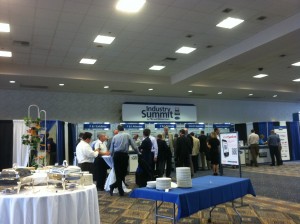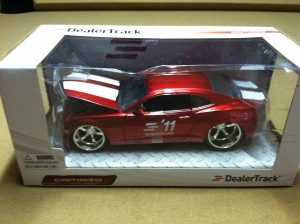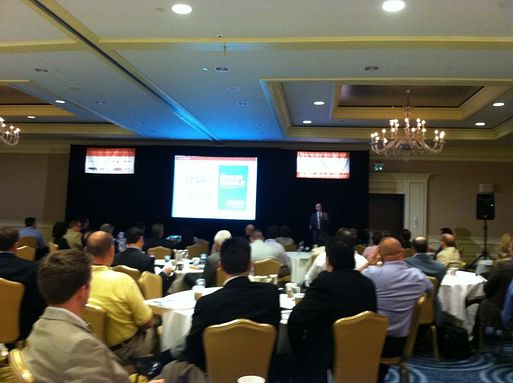This week, I had the privilege of attending the Industry Summit – which includes 3 conferences — the F&I Conference, the Special Finance conference and the VSCAC conference. These conferences focus mainly on F&I and special finance topics. In this age of internet shopping, however, credit-challenged shoppers are also researching on the internet – whether it’s typical online car research or they’re searching for financing assistance online – so I wanted to see what advice and tips I could learn to share with our audience.
I was quite surprised to find that finance companies are interested in penetrating the franchise dealer market with hybrid “Buy Here, Pay Here” programs. Dealers lose many car deals each month due to the inability to secure financing for their customers. The idea is that the dealer would carry the note for 90 days, then these companies would purchase the notes for $.60 on the dollar. If structured correctly, and with the right program guarantees and commitments to buy these loans from these companies, a dealer could potentially pick up a decent amount of deals they otherwise wouldn’t be able to keep on the road (or put there in the first place).
An example given to me was of a franchise dealer who amassed a $22 million portfolio which he could cash out at any time while making a $5 million net profit. I could see this as an alternative method of financing – a last case scenario – for franchise dealers who are selective in whom they carry notes for or a new way for dealers with a high demographic of these customers to gain more deals and market share. Whether they choose to carry the note past the 90 day period is entirely up to them and, if structured properly, could mean extra profit and deals each month. Many stereotypical “Buy Here, Pay Here” lots went under during the hard times we’re just emerging from and this is a great way to capture market share quickly. I could see many customers who would feel more comfortable and willing to participate in a program like this offered by a franchise dealer versus the small used car lot that these programs typically exist at.
One of the most popular and well attended sessions was a Marketing and Advertising Dealer Panel regarding special finance with Scott Falcone, dealer, World Hyundai Matteson and Tom White Jr., general manager, Suzuki of Wichita. Many of the dealers in the audience wanted advice on how best to operate a special finance department including how to handle & identify those customers early in the process. Scott Falcone said that instead of treating special finance customers differently, they handle all customers as if they were special finance from an investigative standpoint. Tom White agreed saying that the most important question they ask on the meet & greet is regarding source and that usually helps identify those customers who may need special financing assistance.
Scott addressed another question regarding what to do to keep that special finance customer distracted while you are waiting for a call back or bank approval. He strongly suggested that dealers test drive those customers who can’t buy cars. By doing that, they get excited and are more likely to work with you with a co-signer, etc. and they get excited.
Both dealers do spot-deliveries and an audience member asked: “What’s an acceptable take back percentage?” Tom White said that his goal is an 8% take back on spot deliveries. If it’s more than 8%, then they are being too aggressive. If it’s less than 8%, they are not being aggressive enough. Tom White went on to share that their BDC only makes outbound calls on credit leads. Once they started that program, special finance sales went from 12 per month to 39. The retail sales department works all other leads. He went on to say that “the days of being able to take a credit app or look at a credit report are over. Computers are doing the underwriting. Send the deals in. Don’t think or guess.”
The exhibit hall was mostly filled with F&I product companies although I did see a few familiar faces.
Now a couple of fun things…
The coolest “interaction activity” in the hall was, by far, the large game of Jenga constantly being played in the ETE REMANbooth. I “almost” won that darn game. We ended up standing on chairs just to place the next piece on top but, in the end, the employees won. I still smile when I think how brilliant that game was for them. Everytime a game was lost, a ton of 2×4 planks came crashing down causing a lot of noise which could be heard in the whole hall and attracted a lot of attention.
And the coolest swag:
… a sweet car from our friends at DealerTrack! Thanks again for the car! My 5-year old has been playing with it NON-STOP since I got home.
Thank you to all of the people involved in inviting me to the conference – Ed Bobit, Dave Gesualdo and Greg Goebel – it was a privilege to attend and get an insight into the world of F&I and special finance.
(Originally published September 30, 2011 by Dealer magazine)



